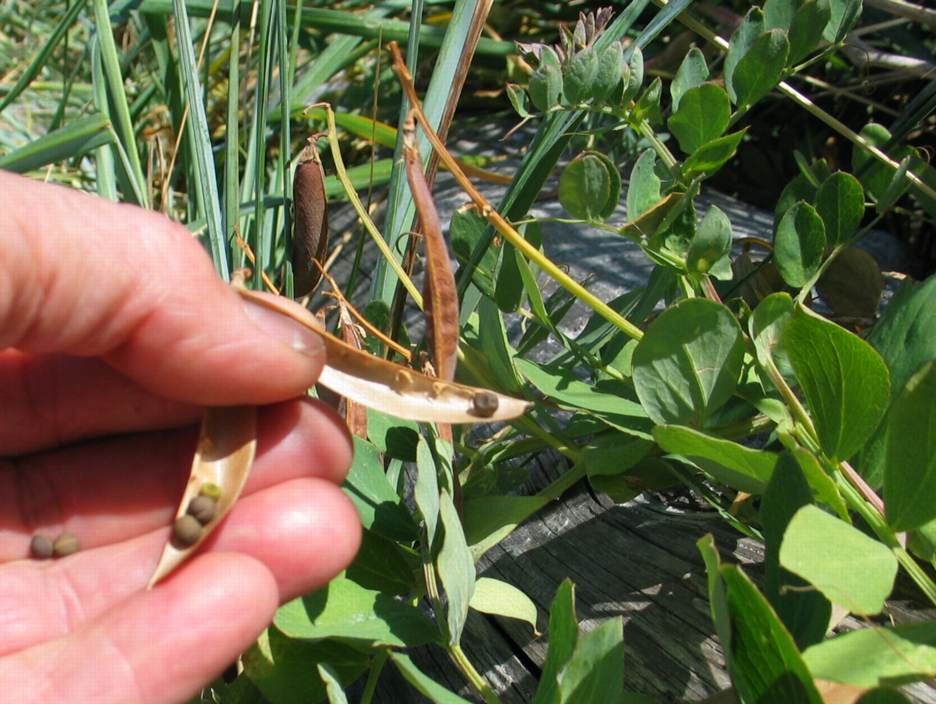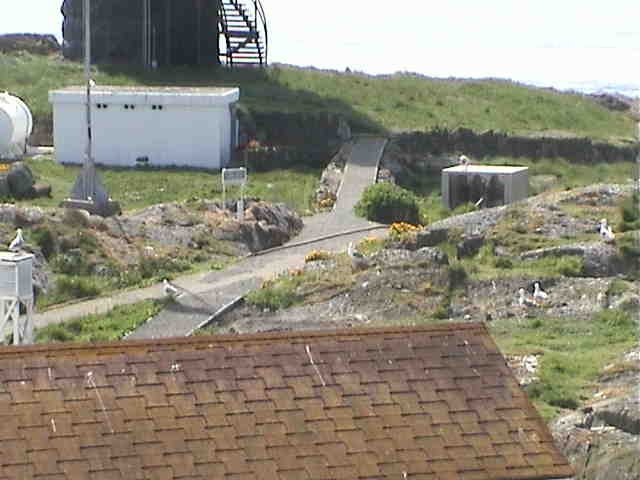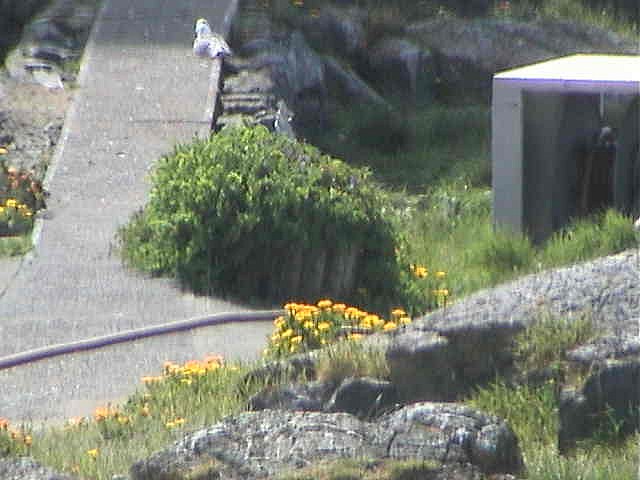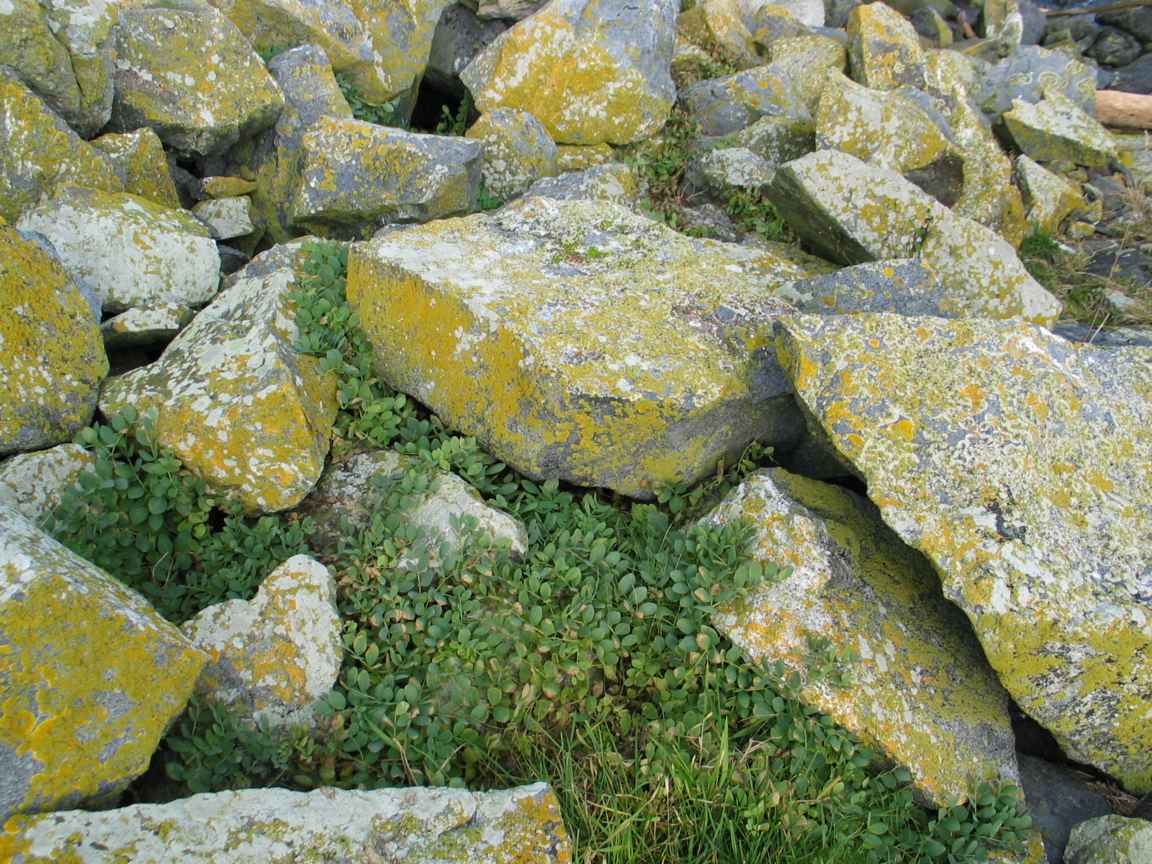- These two pictures were taken by the remote camera 5, showing the location of Lathyrus on a stump near the path.
- You can check it out at different times of the year by using the remote camera 5.
- Over near the jetty in the rubble from the 1970s blasting for the helicopter pad, the plant is gradually starting to recolonize in the upper spray zone. (July 2008, GF photos)
Description:
The beach pea Lathyrus japonicus or wild pea is found along in several locations at Race Rocks.In the west bay near the docks, and in the southeast beach area. It also has a conspicuous location on the center path where it grows out of an old log planted on end. We have also spread some seeds down the sidewalk wall toward the desalinator building. The flowering size is 3/4 inch wide, The flowering color is pink to purple,The flowering time is June to August. Height is 1-2 feet.
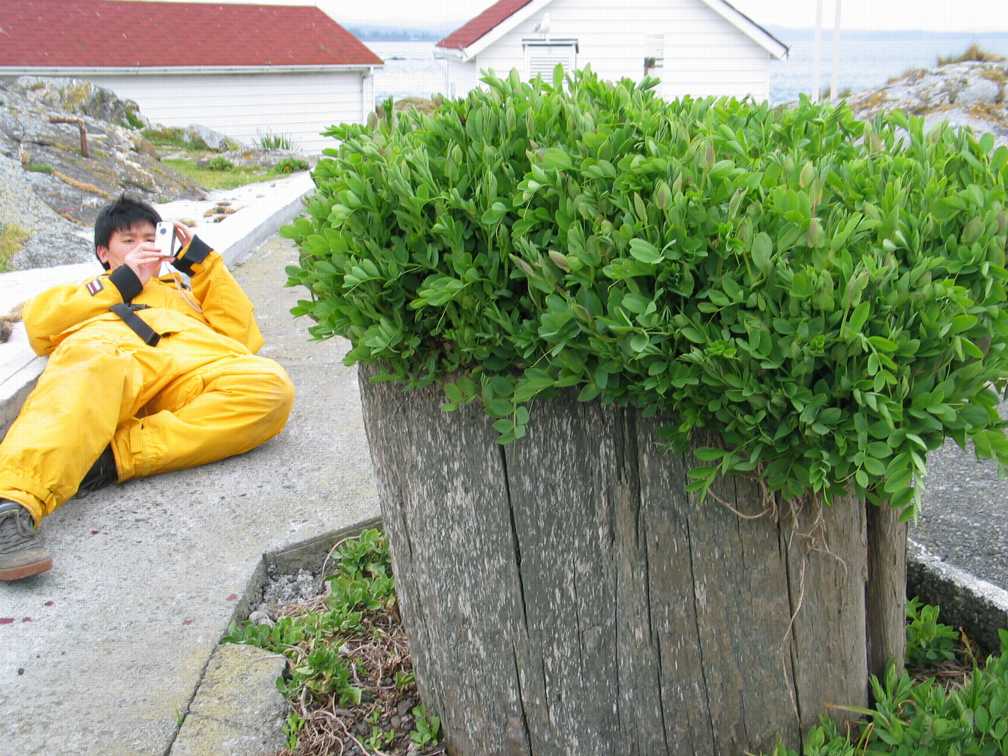 The beach pea has tough roots, is useful a sand binder and it adds nitrogen to the soil.
The beach pea has tough roots, is useful a sand binder and it adds nitrogen to the soil.
A major characteristic of the beach pea that makes it an ideal palnt for coastal areas is that it can live in soils which are Nitrogen deficient. It does this as do most of the legumes by converts atmospheric nitrogen to nitrates, a process known as “Nitrogen Fixation” .It has nodules on its roots which house Rhizobium bacteria. (Link to the exercise on Nitrogen Cycle)
Tne beach pea can cause a very serious disease of the nervous system, (brain and spine). Also the beach pea can be toxic to animals. It was however used as a laxative among the Coastal First Nations people.
Range: Coastal Labrador New England, south to North Jersey,along the Great Lakes, Pacific Coast from Alaska to California.The beach pea cannot grow in the shade and requires moist soil.
Domain Eukarya
Kingdom Plantae
Division Anthophyta
Class Dicotyledonaceae
Family Fabaceae
Genus Lathyrus
Species japonicus
Common Name: Beach pea
| Other Members of the Angiosperm at Race Rocks |
and Image File |
 The Race Rocks taxonomy is a collaborative venture originally started with the Biology and Environmental Systems students of Lester Pearson College UWC. It now also has contributions added by Faculty, Staff, Volunteers and Observers on the remote control webcams. Mersiha Niksic (PC) The Race Rocks taxonomy is a collaborative venture originally started with the Biology and Environmental Systems students of Lester Pearson College UWC. It now also has contributions added by Faculty, Staff, Volunteers and Observers on the remote control webcams. Mersiha Niksic (PC)
|

